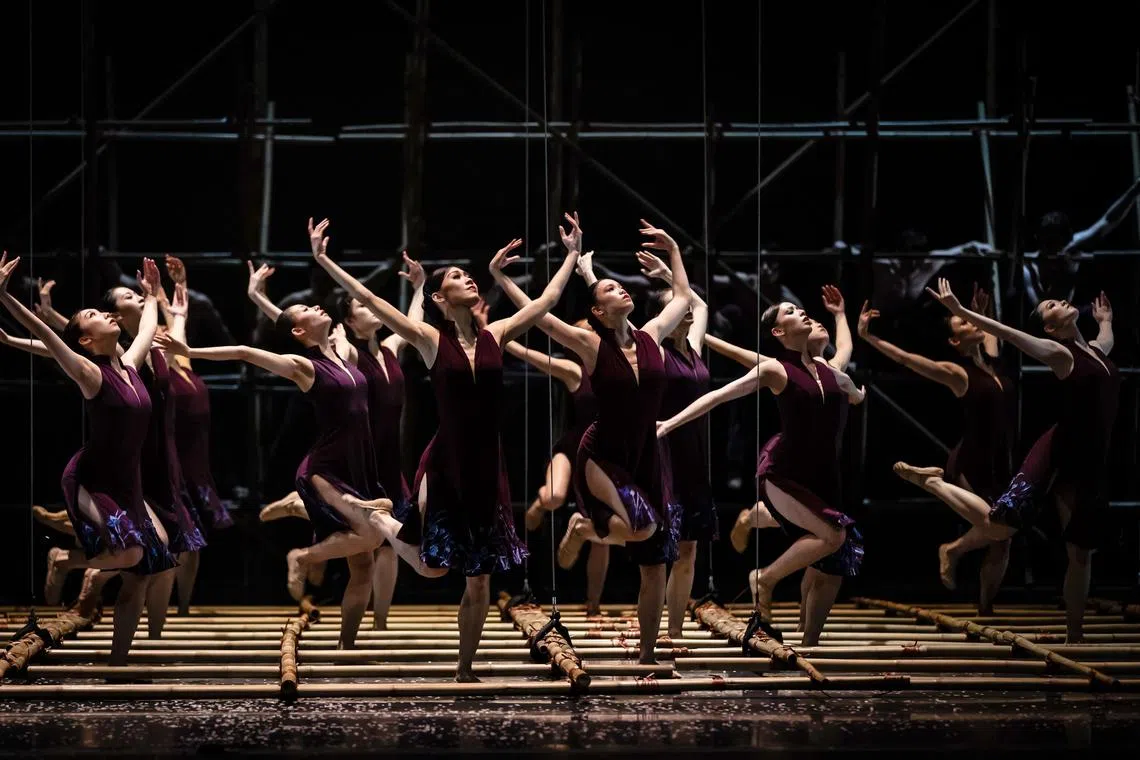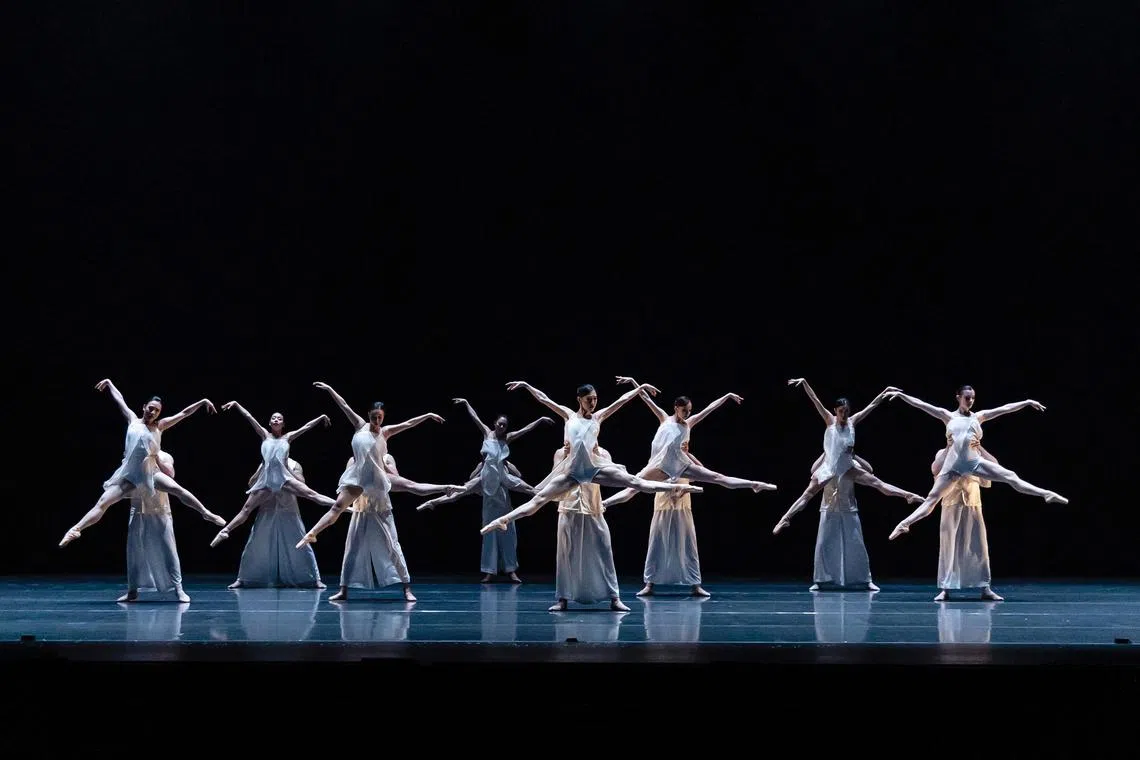Dance review: The Rite Of Spring was highlight of Singapore Ballet Festival
Sign up now: Get ST's newsletters delivered to your inbox

Singapore Ballet performing The Rite Of Spring by Swiss-Canadian choreographer Kinsun Chan.
PHOTO: BERNIE NG
Jocelyn Chng
Follow topic:
Singapore Ballet Festival
Singapore Ballet
Esplanade Theatre
July 19
Previously titled Masterpiece In Motion, Singapore Ballet’s international repertory season has been renamed Singapore Ballet Festival from 2024.
The programme consisted of milestone works in the company’s repertoire: Opus 25, choreographed by Taiwan-born American Edwaard Liang for the company’s 25th anniversary; Australian Timothy Harbour’s Linea Adora, the 30th anniversary piece; and 2024’s new work, The Rite Of Spring by Swiss-Canadian choreographer Kinsun Chan.
Opening the evening was Linea Adora, a relentlessly fast-paced work choreographed to Philip Glass’ Four Movements For Two Pianos. Dancers burst onto the stage almost immediately as the curtain rose, with seemingly non-stop leaps and mid-air directional changes. The slower second movement introduced a visually interesting asymmetrical squatting motif. In this movement, eight pairs of women in dark green leotards lined the stage in a captivating tableau, with demi-soloist Esen Thang shining in a sprightly solo role.
By the third movement, the complex rhythms of Glass’ piano music returned. It was hard not to pant simply watching the dancers on stage. In this unforgiving work set on a bare stage, apart from some lighting elements, the movements themselves do almost all the communication. Unfortunately, the exacting synchronicity implied by Glass’ precise rhythms was not entirely captured by the dancers, especially towards the beginning and end of the performance.
Nevertheless, as with its opening, Linea Adora closed with a bang, leaving a striking image of all 32 dancers before the curtain fell.
The highlight of the programme was Chan’s The Rite Of Spring, set to composer Stravinsky’s work of the same title. With contemporary takes on a seminal work like this, comparisons with the original choreography by legendary Russian dancer Vaslav Nijinsky were inevitable. Chan’s version worked with a looser narrative storyline, although some movements were reminiscent of Nijinsky’s grotesque, hunched-over and repetitive jumping motifs.
The work still contemplated the idea of sacrifice, but more as a group or society rather than as an individual. Dancers often moved around in a tight formation, supporting one another and collaborating as a group to pick up an individual who falls.
Although towards the end a group-versus-individual dynamic did appear, the piece culminated in the singled-out person seemingly triumphing rather than succumbing to the group’s oppression. Demi-soloist Tamana Watanabe’s performance in this role was captivating, embodying the explosive movements with simultaneous intensity and grace.

Opus 25 performed by Singapore Ballet.
PHOTO: BERNIE NG
The last work presented was Liang’s dramatic Opus 25, danced to the pulsating piece Ash by American composer Michael Torke. A highlight of this work was a short but beautiful duet performed by principal dancers Kwok Min Yi and Satoru Agetsuma near the beginning. They executed a lift similar to a fish dive in classical ballet, where Kwok spun upwards in one impressively swift motion.
What makes Opus 25 unforgettable was a motif that bookended the work. A huge red cloth pulled from downstage to upstage enveloped all the dancers like a wave that seemed to swallow them. Together with the all-white costumes, the work’s visual red-and-white theme evoked a sense of patriotism. A sure crowd-pleaser, this provided an uplifting close to the evening’s programme.

